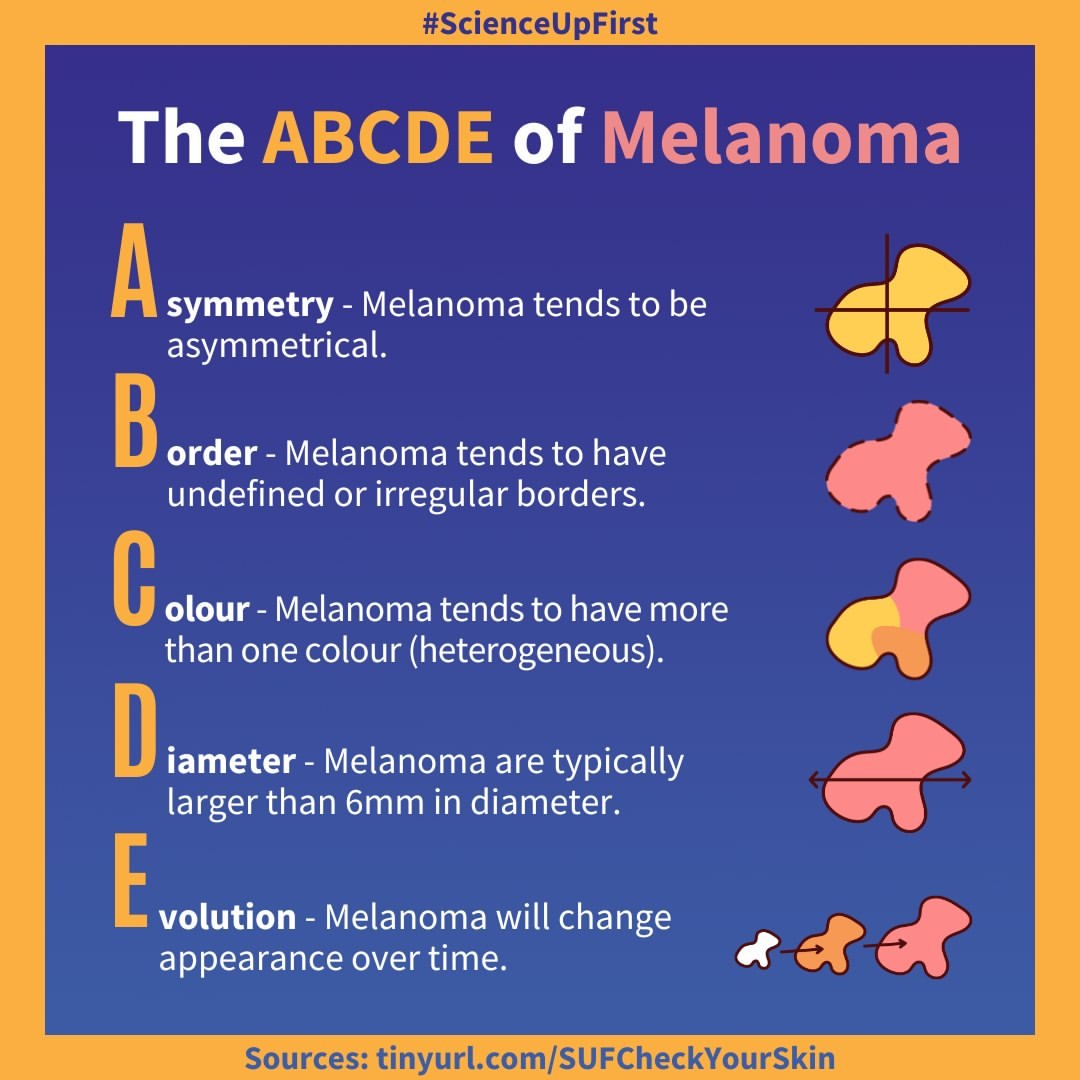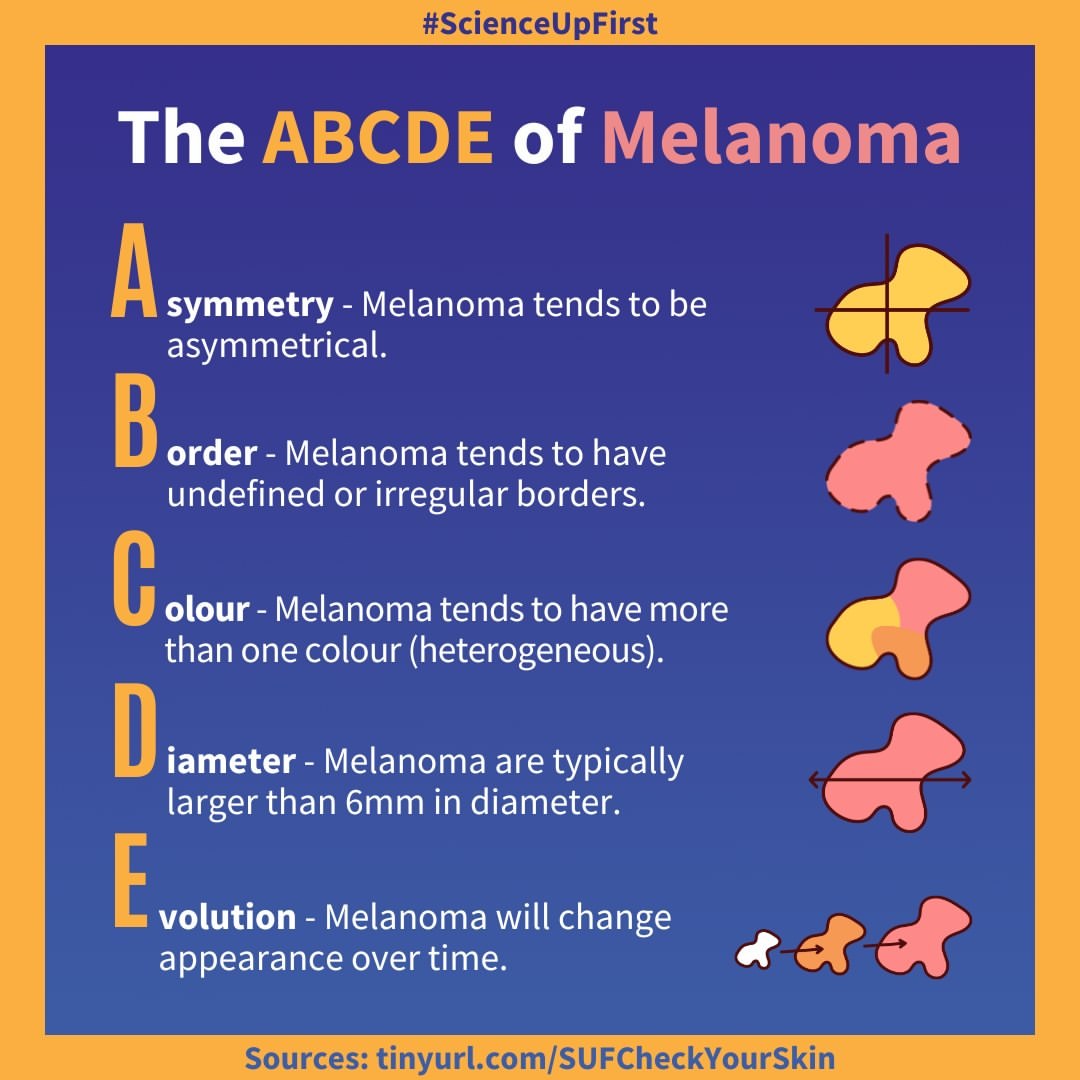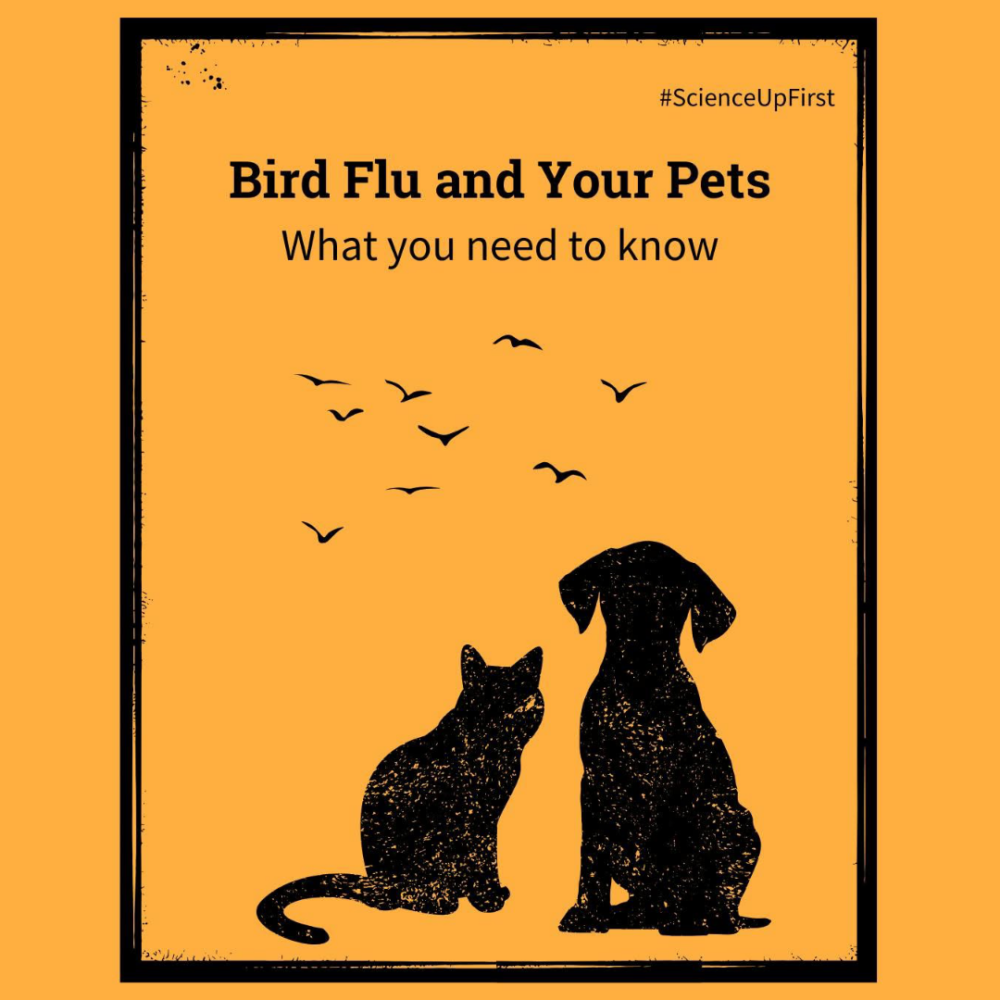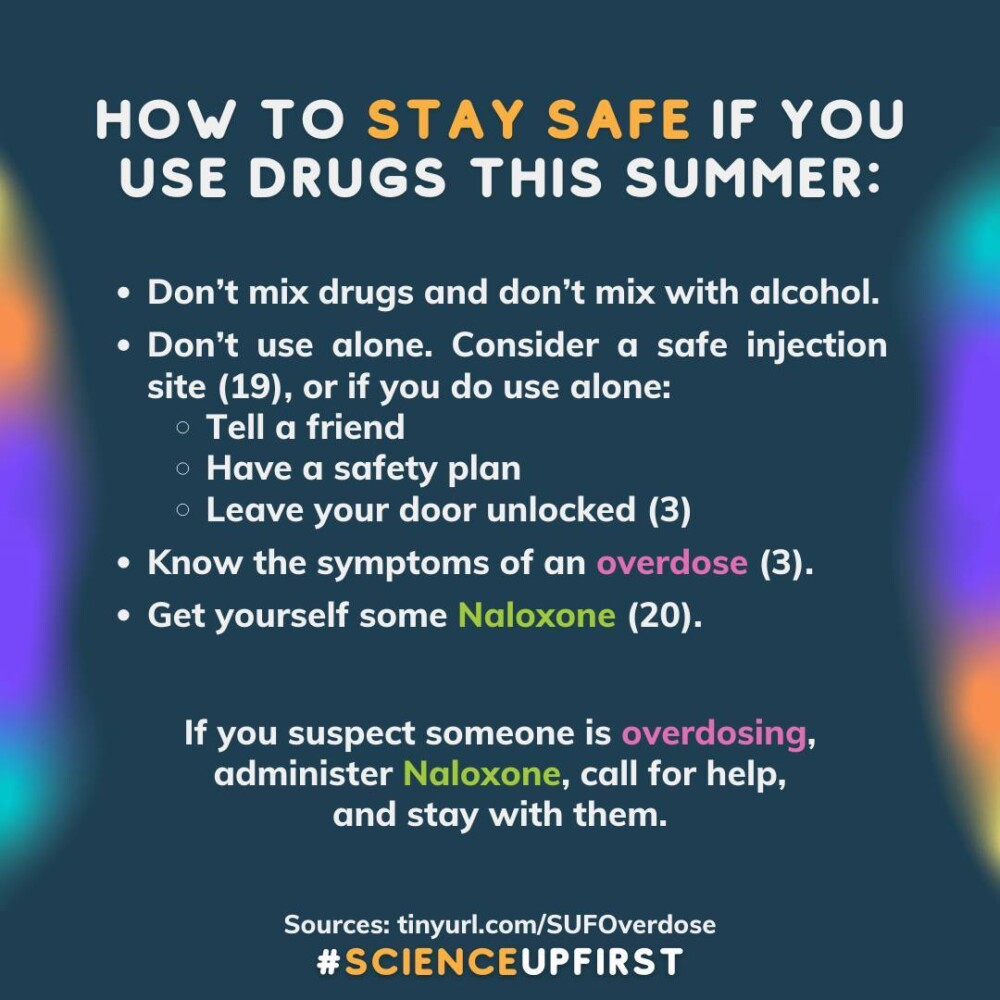
It’s Check Your Skin Day!
Melanoma is a type of skin cancer that starts in melanocytes, the type of cells found in skin, mucosa and retina (1). Checking your skin regularly for weird looking moles is important because early detection will give you the best chance at a successful recovery (2,3).
Melanoma will most often appear on parts of the body that have been the most exposed to the sun (4). However, melanoma can arise anywhere where there is skin so, make sure to check your whole body (2)!
Use a mirror, or ask someone you trust for help. Don’t forget to check between your fingers and toes, the sole of your feet, your underarms and behind your knees, your scalp, your genitals and between your butt cheeks (3).
Checking for melanoma is as easy as saying ABCDE (4,2,5,6). Look for:
- Asymmetry – Non-cancerous moles are usually symmetrical.
- Border – Non-cancerous moles will usually have a smooth and defined border.
- Colour – Non-cancerous moles will typically only be one colour (homogenous).
- Diameter – Non-cancerous mole will typically be smaller than a pencil eraser (i.e. smaller than 6mm across).
- Evolution – Non-cancerous moles will not change in appearance like melanoma would. Melanoma can also become itchy or give you a burning/tingling sensation.
Keep an eye out for “ugly duckling” moles (2,6). What we mean is, look for moles that stand out from all your other moles. It could be a mole that is unusually larger, smaller, darker or even paler than all your other moles. It could also be a mole that is uniquely isolated from all the others (2).
If one of your moles has one of melanoma’s ABCDE characteristics or is standing out from your other moles, you should probably have it checked by a healthcare professional (5).
Share our original tweet!
Today is Check Your Skin Day!
Checking your skin regularly for weird looking moles is key. Early melanoma detection will give you the best chances at a successful recovery.
Let’s start! #ScienceUpFirst #CheckYourSkin
[1/5] pic.twitter.com/fymY9XJAaL
— ScienceUpFirst | LaScienced’Abord (@ScienceUpFirst) May 8, 2023
See our original Instagram post!
View this post on Instagram




